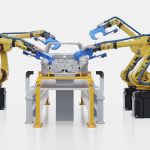When procurement is centralized, results speak for themselves: lower costs, leaner teams, faster execution, and smarter strategy. Decentralized models can’t keep up.
Centralization Isn’t a Theory—It’s a Proven Advantage
In procurement, structural choices aren’t just operational—they’re strategic. And when it comes to how direct procurement is organized, the evidence is unequivocal. Centralized models consistently outperform decentralized ones in nearly every meaningful area: cost, staffing, cycle time, and productivity. It’s not a marginal benefit—it’s a transformational one.
Direct procurement touches the heart of any product-based organization. Whether it’s materials feeding the production line or services that enable delivery, the way procurement is structured determines how fast and how well the business moves. Centralization in this context refers to organizing the procurement function under one coordinated structure, rather than scattering it across business units or regions. While decentralization can offer flexibility, it comes at a steep cost—literally and operationally.
What Centralized Procurement Actually Delivers
Recent benchmarking data shows that organizations with centralized direct procurement functions spend significantly less on procurement per unit of revenue than those with decentralized models. In practical terms, that can translate to millions in annual savings for a mid-to-large enterprise. But the benefit isn’t just financial. Centralized teams require fewer full-time staff to execute procurement across all stages—sourcing, contracting, ordering, and supplier management. The leaner footprint doesn’t compromise performance; on the contrary, it improves it.
Organizations that adopt centralized procurement also execute faster. Supplier onboarding, contract setup, and sourcing decisions happen more quickly when controlled through a unified function. This agility has direct implications for resilience. In volatile markets—especially those disrupted by trade barriers, raw material shocks, or logistics volatility—being able to act quickly isn’t a bonus. It’s business-critical.
Beyond Efficiency: Laying the Groundwork for Automation and Control
Centralization creates the structural foundation needed for automation. It’s far easier to introduce technology that streamlines purchase orders, approvals, and spend analysis when the process isn’t fractured across systems or teams. Decentralized procurement often leads to inconsistent data, manual workarounds, and lost opportunities for improvement.
One of the less obvious but most valuable outcomes of centralization is control. A single system of record means better visibility, reduced manual interventions, and fewer compliance risks. Procurement teams in centralized models are more likely to operate with clean data, quicker approvals, and lower levels of maverick buying. Those are not just efficiency wins—they’re indicators of operational maturity.
Strategy Demands Structure
Procurement has earned its seat at the strategic table. But to fulfill that role, the function must be equipped with the right structure. Centralization isn’t about bureaucracy—it’s about clarity, control, and capacity. It aligns procurement with enterprise goals and allows for faster decision-making when it matters most.
That said, not every organization can shift to full centralization immediately. In those cases, the priority should be standardization: aligning systems, processes, and data to minimize fragmentation. Even partial moves toward greater consistency can deliver significant results.
What’s clear is that the old arguments for decentralization—local control, flexibility, speed—are increasingly outweighed by the realities of modern procurement. Centralization doesn’t remove flexibility. It simply removes the friction that prevents it from scaling. And in today’s procurement environment, that may be the most important shift of all.







